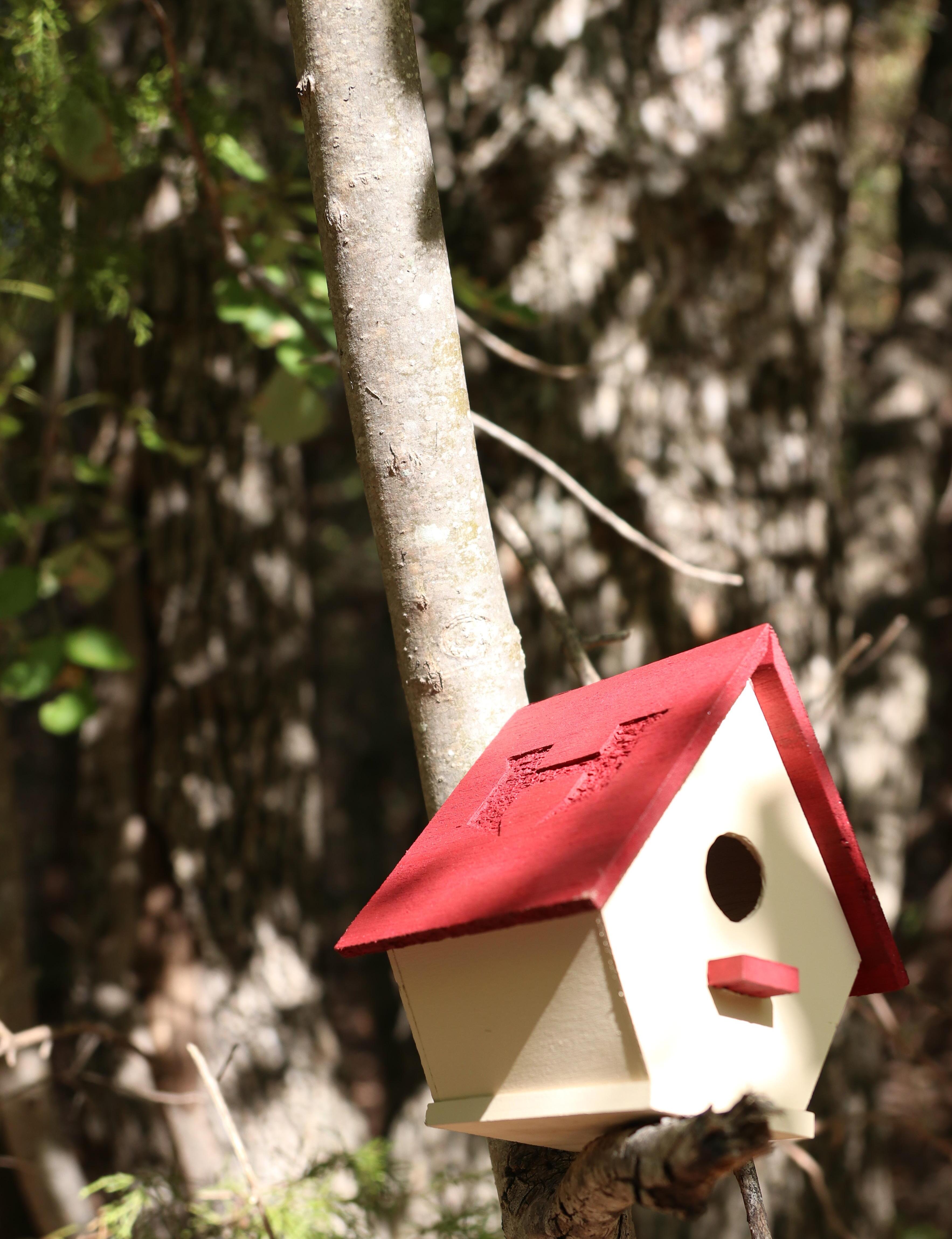

Hebron High School · 4207 Plano Parkway, Carrollton, TX 75010 · 469-713-5183 Volume 21, Issue 1 Oct. 4, 2023 Inside The Hawks’ Nest Vaping policies (page 5) - BSU (page 7) - Mental health struggle (pages 8-10) - Teen voices (page 11)
The Hawk Eye staff contributers

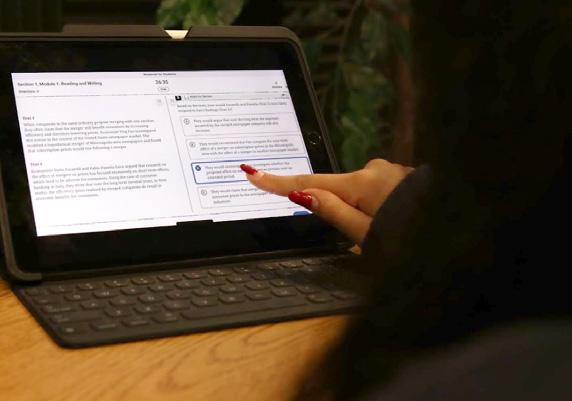
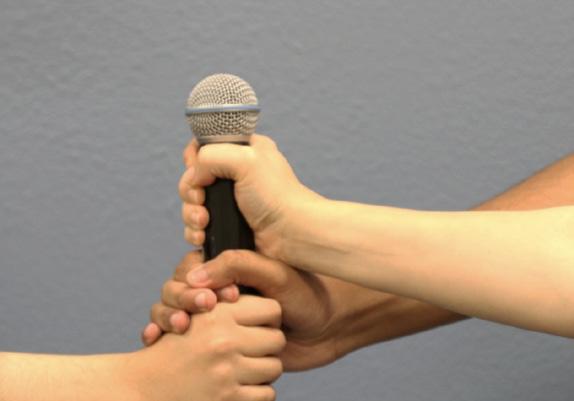


Brody Lofgren
Andrew John
Hannah Mathew
Olivia Evans
Saahir Mawani
Madeline Rivera
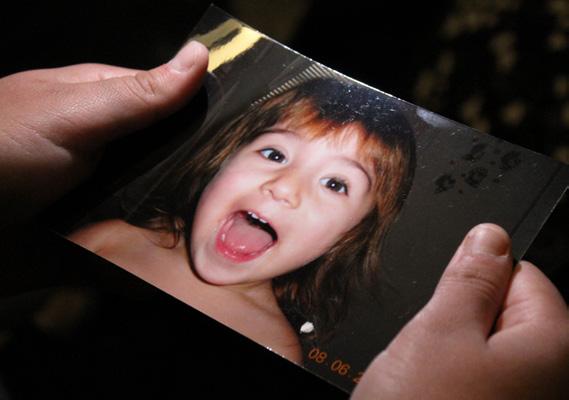
Eyesha Sadiq
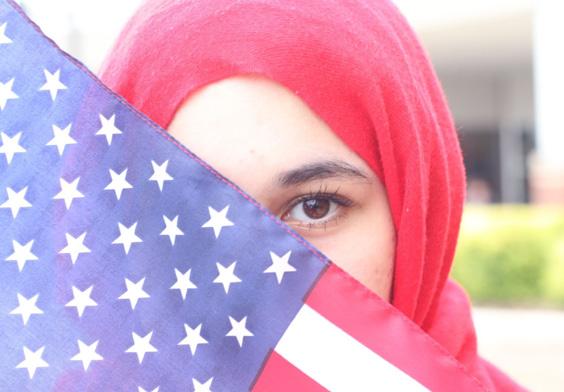
Lily Andersson
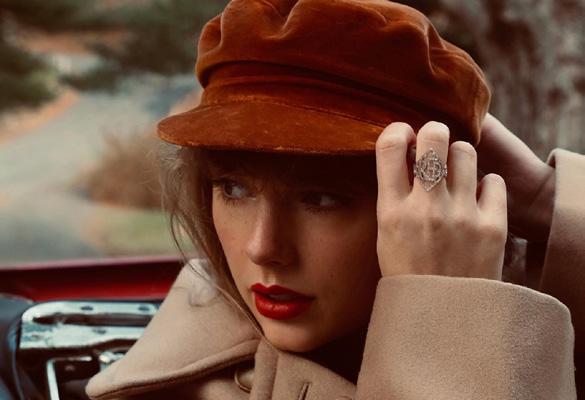
Heather Wheeler
Shiren Noorani
Krista Fleming
Mie Bakuya
Bird house provided by Michael Roman Brown
Adviser
Steven Jones

04-05 04-05 04-05 04-05 04-05 A Heart Like JJ’s DESIGNED BY BRODY LOFGREN 04-05 04-05 A Heart Like JJ’s 04-05 08-09 FEATURE 04-05 10-11 EDITORIAL NEWS 06-07 FEATURE 04-05 12-13 OPINION 04-05 14-15 ENTERTAINMENT
Find us online by scanning this QR code!
Hawk Eye magazine is an official publication of Hebron High School. It is a student-produced magazine which strives to represent the student voice. We will aim to report all news relevant to Hebron High School and its student body without bias to race, religion or creed. Views expressed by columnists are their own personal opinions and do not necessarily represent the views of the entire staff. Editorials reflect the staff opinion and may not reflect the views of the school administration. We encourage reader input via letters and story ideas. Contact a staff member or fill out the contact form on our website, hebronhawkeye.com with any of these items. The Hawk Eye is a member of Interscholastic League Press Conference, Texas Association of Journalism Educators, Association of Texas Photography Instructors, the Journalism Education Association and the National Scholastic Press Association. 02 CONTENTS
The
LETTER FROM THE EDITOR
Dear reader,
It is an absolute pleasure to formally introduce myself to you as The Hawk Eye’s Editor-in-Chief for the 2023-2024 school year! My name is Madeline Rivera, but you can call me Madi. I am a senior and am incredibly excited to lead the talented reporters of The Hawk Eye this year.

During my three years on staff, I have been exposed to facets of our school that make it truly unique, the most prominent being the culture and diversity – the people. As a newspaper staff, it is our journalistic duty to cover and report current issues. It is also our responsibility to showcase and highlight exceptional individuals in our community. There are so many different faces with different backgrounds, cultures and experiences in our school that, with so much diversity, how could it not be celebrated?
Growing up as a mixed child in a predominantly white neighborhood, it was hard to fit in with people on either side of my heritage. I often felt as if I was too much this, not enough that. However, upon entering the ninth grade campus my freshman year, I was sorely mistaken that I could never truly “fit in.” In a matter of days, I met — and still meet — wonderful people who celebrate me as a person, not for the color of my skin or where I originate from.
The Hawk Eye’s first print edition of this year’s theme is “Inside the Hawk’s Nest.” The print staff, myself included, have worked tirelessly to include the numerous cultures that make Hebron unique. In this issue, we cover major shifts in our academic culture as the SAT/ACT/AP tests become online (pages 4-5), showcase students’ pride in heritage and breaking generational barriers (pages 7-6), and include an editorial about the importance of advocating for individual beliefs (page 11).
I, along with my fellow print staff members, present this issue to those who feel unsure if they belong at Hebron yet, to those who feel like outcasts from the majority and, most importantly, to those with cultures included in this edition.
 Madeline Rivera Editor-in-Chief.
Madeline Rivera Editor-in-Chief.
03
DESIGNED BY ANDREW JOHN
Starting this spring, the SAT, PSAT, ACT and seven AP tests will be given digitally. For AP exams, districts were given a choice to administer it online or on paper, and LISD decided on digital testing.
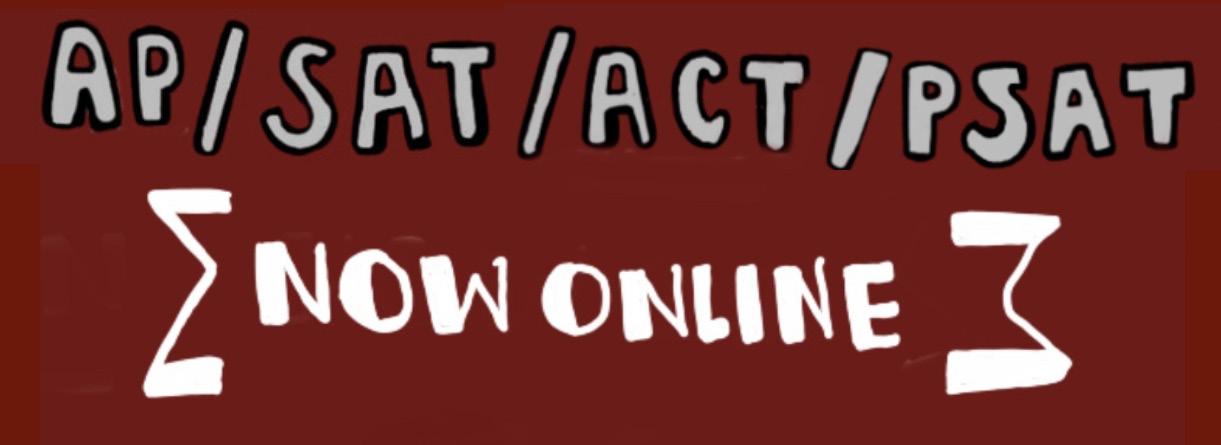
“I feel competent about the administration [side of testing],” testing coordinator Emily Bryson said. “There are all sorts of tools that are easier to provide students online. It’s easier on the staff and the logistics of the day.”
College Board tests will be taken on a software called Bluebook where students will be able to highlight, change the font size and take notes during the test. On the SAT and PSAT, students will be able to use a calculator on the whole math portion and there are only two sections -- math and English -- instead of the original four: math calculator, math non-calculator, reading and grammar. In addition, the exams will implement “adaptive testing,” which will alter the difficulty of a student’s test questions depending on how successful they are on the early-portions of the test.
“[The test is] going to differentiate students’ strengths and weaknesses,” Bryson said. “That will give us a better range of where people actually are, instead of just [thinking] they are not up there. [This will allow us to] be able to accurately trend everybody.”
The AP exams: Computer Science Principles, English Language and Composition, English Literature and Composition, European History, Seminar, U.S. History and World History: Modern will also be given digitally. Each exam will have the same structure as the paper exam, the only difference will be that it’s online.
“One issue that I’ve always had with my AP exams is when I’m writing [document-based questions] and
STORY BY EYESHA SADIQ
[free response questions] my hand gets tired and cramps a lot,” junior Krrish Jagatap said. “I know other people that have had issues with that, [and] typing is going to make it a lot easier to be able to write, and you’ll be able to get all your points down. It will definitely benefit [the] students.”

Although there are benefits to the test becoming digital, AP English teacher Jeanette Rooks said she worries about the potential downsides of the changes.
“My concern about the online [tests] is that [students] will skim over things,” Rooks said. “We don’t proofread as carefully and don’t pause as much as we do when handwriting. I actually worry a little bit about clarity getting lost in essays.”


The Bluebook app has been downloaded on all iPads so students can use their school issued device on test day. The ACT will be given on a software called TestNav.
“I think a lot of people feel the digital version of things mirrors the way the world is going; like if you have a job and you have to do a certification exam, it’s probably going to be online,” Rooks said. “I think it’s about trying to prepare our kids to be ready for the world.”
One reason the school chose to go digital was because of fewer materials being needed. According to College Board, there will be more test security and less paper. There is also a smaller chance for tests to get lost because they will be sent straight to the testing administrators.
“We are kind of learning [the digital testing] with the kids and hoping to prepare them,” Rooks said. [We are] hoping to be just one step ahead of [the students], so we can prepare them for [the test].”
04 NEWS DESIGNED
MATHEW
BY HANNAH
ANNOTATE CALCULATOR HIGHLIGHT 0
STORY BY SAAHIR MAWANI
The Texas House Bill 114 went into effect Sept. 1. It mandates that any student caught with any vape-related paraphernalia will be removed from school and be placed in the Disciplinary Alternative Education Program (DAEP). DAEP campuses are meant for the entire district, holding around 40 students.

“DAEP facilities are generally not a big campus,” principal Amy Boughton said. “In a district our size, they can fit anywhere from five to ten students [per LISD campus}, but the amount of [nicotine and THC] vapes we are running into across the district [has led to] people saying this was an overreach. There weren’t considerations on how big each district’s facility was, and how many students it can hold.”
Vaping nicotine or THC can have intense effects on the brain, and the effects are even greater on teenagers. According to the National Institute of Health, the human brain fully develops in a person’s mid-to-late 20s. Those who vape are 2.4 times more likely to experience depression and are 1.67 times more likely to have a “poor mental health day” in a month.
Long-term effects of vaping include nicotine addiction, mood disorders and lack of impulse control. Boughton said she works closely with her administrative team to determine why students feel the need to vape at school.
“I do not want to run any jurisdiction over anybody’s private time at home, but [as administrators] we need to get students the proper help they need so they can be successful,” Boughton said.
I do not want to run any jurisdiction over anybody’s provate time at home, but [as administrators] we need to get students the proper help they need so they can be successful.

- Amy Boughton, principal
The school has implemented vape detectors in the bathrooms across campus. If a student is vaping inside a bathroom, it will notify Boughton and the rest of the administration. Boughton said an admin will be at the site of the notification within one minute. Alongside the detectors, footage from the security cameras is analyzed, and students are interviewed.
DESIGNED BY OLIVIA EVANS
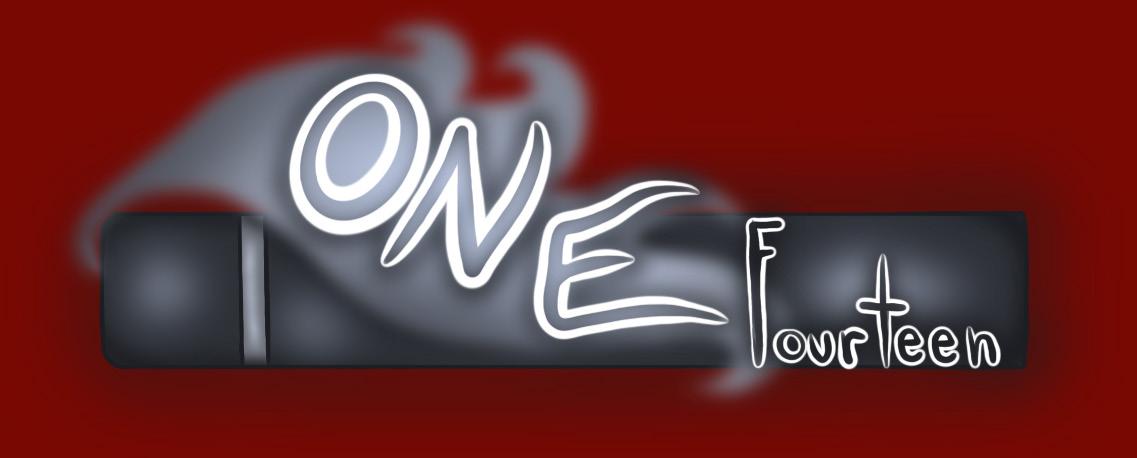
“I think the school has been doing a good job of reminding us that they want to keep us safe,” said sophomore Cara Shen. “It’s an important topic and they need to go over it.”
If a student is sent to DAEP, their respective counselor is notified within a week of them being enrolled. They then have regular correspondence through email, and on Friday mornings, the student assistance counselor visits everyone from the home school’s campus. The counselors work with students to understand potential reasons they vape. Bradley says students are impacted by the people around them.
A student’s inner circle matters. All the people we hang out [with] impact [us] whether we [want] them to or not, and that includes teachers. Luckily, many students who have come back from DAEP have expressed interest in changing.
“A student’s inner circle matters,” counselor Jennae Bradley said. “All the people we hang out [with] impact [us] whether we [want] them to or not, and that includes teachers. Luckily, many students who came back from DAEP have expressed interest in changing.”
All future cases will be decided on a case-by-case basis, depending on what the students are carrying. Before students come back to school from DAEP, the counselor and assistant principals get on a WebEx meeting to discuss the next steps. The state has not yet expanded campuses to account for a potential increase in students. Boughton said she believes the current decisions by the state are not enough.
“I think the legislature has to think further ahead when they decide this,” Boughton said. “[They need to] help schools out, because I’m sure there are schools that financially can not afford things like vape detectors to be proactive about this threat, instead of reactive and having to send everybody to DAEP.”
NEWS 05
“
“
- Jennae Bradley, counselor
Defying by Applying
Story by Olivia Evans
Senior Jose Gallegos’ eye’s search on Common App, scavenging for the button he’s been anticipating: “Create an account.” He’s already made up his mind, but before he makes the final click, a sense of surrealness hits: he’s the first. The thought rings in his head, and then all of a sudden, Click.
Jose has solidified his goals of becoming the first one in his family to attend college.
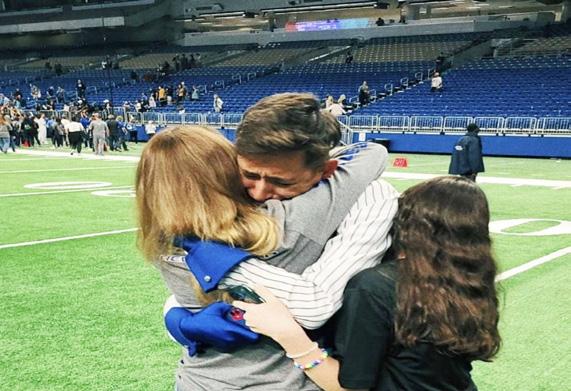
With applications open since Aug. 1, the opportunity Jose has been given is starting to become a reality — one he said can be overwhelming.
“[The college process has] been a little difficult for me because I don’t have anybody to ask questions to [since] my parents didn’t go to college,” Jose said. “I’m doing it all on my own. I’m playing a little bit of catch up because I’m just now starting to realize how [college applications] work.”
Jose’s mom, Dina Gallegos, has had to make several sacrifices, Jose said, many of which have gotten him to where he is today. At 13-yearsold, Dina said that she experienced a culture shock when she moved back to the U.S. after leaving California to go to Mexico. She had to pick up English at a rapid pace as she was accustomed to her first language, Spanish.
“[Moving] was hard because I didn’t know the language,” Dina said. “I didn’t know how life was here, and [there’s] a lot of differences between here and Mexico. Not knowing [anyone] and learning English at my age — it was hard.”
Jose’s grandma wasn’t met with high paying jobs after her arrival. While Jose’s grandpa remained in Mexico, she worked three jobs to put a “roof over their family’s heads.”
“Not having papers here in the U.S., [my grandparents didn’t] get glorious jobs like sitting at a desk,” Jose said. “They [had] to work in the most extreme conditions. With those sacrifices my
grandparents made to get [my family] over here, I’m really appreciative. Even though my parents did have more opportunities than [my grandparents], it wasn’t like it is for me [now].”
Jose moved several times during elementary school because his parents struggled financially due to increasing rent. This caused him to not form many close knit friends early in his life. Upon going into middle school, he said he was physically and verbally bullied — in-person and online — for the way he dressed and interacted with others.
“I feel like the only reason I am who I am today was because of what I went through,” Jose said. “During time when I was getting bullied, I always tried to reason with the people bullying me. I was always thinking ‘Maybe they’re going through something hard; maybe they’re dealing with something I don’t know.’ Now, I always keep in mind that you never know what someone is going through. It’s a big reason as to why I always need to be nice to people.”
Despite past challenges, Jose is ranked in the top 10% of his class, part of the National Honor Society, the president of the Hands of Hope club and one of the band’s drum majors.
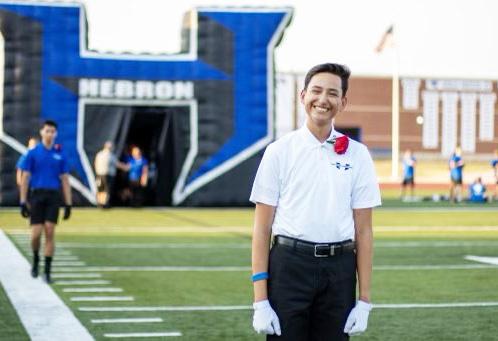
“It’s very exciting to see kids who are the first in their generation to go to college,” geometry teacher Amanda Bowers said. “In my opinion, it’s like turning things around for the better and that’s what we want as teachers — to see students grow, be successful and have improvement. [Jose] set his mind to it, so I think he’s going to be successful in college and post college.”
Through the sacrifices of his grandparents and parents, Jose persists through college applications. He said reaching his goals of getting into college, becoming a nurse and helping others won’t be easy, but the opportunity he’s been given is one he can’t waste.
“First generation means defying the odds,” Jose said. “[My mom’s experiences] have inspired me to be as strong as her, be as resilient and be strong minded while also having a strong heart. She inspires me the most.”
“I always tried to reason with the people bullying me. I was always thinking, ‘Maybe they’re going through something.’”
06 FEATURE DESIGNED
-Jose Gallegos
BY SAAHIR MAWANI
Jose hugs his mom, Dina, and sister, Genesis Gallegos, after the band was announced State Champions in 2021. (Photo provided by Jose Gallegos)
Jose walks down the field and smiles for the band’s senior night. Senior night was held on Aug. 25 for band students graduating in 2024. (Photo provided by Jose Gallegos)
sisterhood through leadership
BSU announces first all-women officer team for 2023-2024 school year
Black Student Union (BSU) announced its first all-women officer team for the 2023-2024 school year on Sept. 6. BSU sponsor Alisha Hensley said this has not happened in the four years she has sponsored the club.

Hensley and co-sponsor Marcus Osby created an officer application form at the end of last school year for students interested in applying. After completion, students would then attend an interview with a staff member not involved in BSU. Hensley said it was to “take out the bias” from Osby and herself. All of the students who filled out a form and interviewed with teachers were women.
“Those teachers sent me and Mr. Osby some feedback from their interviews,” Hensley said. “After they interviewed, Mr. Osby and I sat down to select who we thought was the best fit for the leadership positions.”
Hensley said that when selecting officer positions with Osby, specifically president, the choice was decided by the prospective student’s time management skills. Another factor was that the president had to be a senior and willing to give plenty of time to BSU. As a result, senior Kionna Johnson was announced as BSU president.
“[Johnson] mentioned that she was graduating early [this year],” Hensley said. “[She] said that because she’s graduating early, she would have more time to dedicate [to BSU] in the spring semester.”
Johnson has been a member of BSU since her sophomore year. Throughout her membership, Johnson is a frequent helper in the homecoming committee, taking leadership roles for decorating classroom doors and coordinating BSU’s homecoming parade float.
As president, Johnson is in charge of everything BSU related. She creates slideshows, interactive ways for members to meet new people and learn new things at their biweekly meetings. Alongside vice president Harmonie Lane, Johnson coordinates events for the club to participate in, such as movie nights or cookouts.
“[Lane and I] like to give the [members] fun new ways to learn information about their culture,” Johnson said. “I think
DESIGNED BY SAAHIR MAWANI
Story by Madeline Rivera
the textbooks are outdated. If you ask anybody, [they may] only know three people: Malcolm X, Martin Luther King Jr. [and] Rosa Parks — maybe Harriet Tubman. In BSU, we have trivias — members can use their phones and find interesting Black figures so they can learn something new about our culture.”
After Johnson was appointed president, Lane was selected as vice president. She has been in BSU for two years and was the community service officer last year. Lane’s job consisted of making sure all BSU seniors and members were volunteering, getting their hours and managing graduation chords. Lane said that, from her perspective, being a member of BSU means spreading her culture in her community and allowing others to understand it better.
“I want to have more people involved — BSU is a lot more than what people think it is; it’s a family —- it’s a culture,” Lane said. “You don’t have to be Black to be in BSU, we love allies. We love having everyone involved; I want people to love the community [of BSU] and be able to spread the love of BSU.”
Johnson and Lane’s main goals include getting more members involved at school events, offering more community service opportunities and creating a bond with members that can last beyond graduation. Lane said their allwomen officer team is breaking gender and generational barriers.
“I didn’t realize we had an all women BSU officers [team] until we took our pictures,” Lane said. “I was literally like ‘this is girl boss.’ I love that they’re all just beautiful Black women, able to take control and take charge. Back then [in history], women didn’t have that much of a voice, so knowing that we can take over and be heard is great — having [women leading] in BSU with Black women involved is very special to me.”
FEATURE 07
“BSU is a lot more than what people think it is; it’s a family — it’s a culture”
- BSU Vice President Harmonie Lane
THE NEXT DESTINATION
JUNIOR SHARES STORY OF MENTAL HEALTH STRUGGLE
Editor’s note: This article discusses self-harm and suicide attempts. If you or someone you know is struggling with similar things, call the Suicide and Crisis Lifeline at 988.
They don’t know.
That’s what junior Izzy Frederick tells herself as she walks down the halls or drives through the streets just to look at people and “experience life.”
Some of them may know she was called “Elmo” in eighth grade for her red hair, and a few of them may have even recognized the change in her between middle and high school.
But they don’t know how long it’s taken her to get to this point. They don’t know the years of counseling it took for her to smile daily and “mean it every time.”
They don’t know what happened next to the dumpsters behind the Dick’s Sporting Goods in Stonebriar Centre, nor the pain that followed later that night.
They don’t know that, three years ago, on the Saturday night after Thanksgiving, Izzy tried to take her own life.
EARLY LIFE
When she first started kindergarten, Izzy began to show signs of anxiety — constantly biting her nails or chewing her hair. Yet, at the end of the school year, her teachers recommended she be put into the Gifted and Talented (GT) program.

“I dropped my pencil a thousand times [during the test to get in,]” Izzy said. “But eventually, I got the call. It was the best day of my parent’s life.”
Izzy transferred to Independence Elementary, where her mother enrolled her in the Dual Language program. In the course, the teacher would spend a week teaching in English, then the next in Spanish. Unable to understand Spanish very well, Izzy’s grades began to decline.
“It was too much for her,” Izzy’s mom, Minerva Frederick, said. “Her teacher knew I [spoke] Spanish, and she’d expect more of Izzy because of that.”
Even during the weeks she was taught in English, Izzy struggled to fill the gaps left from the lessons before. Near the end of third grade, the school approached Izzy’s parents and gave them an ultimatum: she had to either leave GT or the Dual Language program.
“Being out of GT would’ve been detrimental to my parents,” Izzy said. “They never wanted that. Once I was in, that was their pride and joy. They were just so proud that I was ‘smarter’ than everyone else.”
“THE WRONG CROWD”
In sixth grade, Izzy befriended older students, many of whom were “talking about the wrong things and doing the wrong things.” Following their examples, Izzy’s reputation took a turn for the worse.
“I wanted to grow up way too fast,” Izzy said. “I thought it was the coolest
thing in the world to be with these older kids because I wanted to be those older kids.”
A few months into the school year, Izzy’s new girlfriend told her that she had been self-harming and explained the term for the first time. Later that night, Izzy went home and self-harmed, which eventually became routine. She hid her arms under oversized hoodies, and would make another mark after school just to stare at the blood in the mirror.
“I was raised with this ‘crying in front of people isn’t a good thing’ mindset,” Izzy said. “When I was sad, I went upstairs, cried in the closet, wiped my tears away [and] pretended to be fine. I thought it was weak to be the way that I was, so I didn’t tell anybody.”
Izzy’s relationship with her parents
I was raised with this ‘crying in front of people isn’t a good thing’ mindset. When I was sad, I went upstairs, cried in the closet, wiped my tears away [and] pretended to be fine. I thought it was weak to be the way that I was, so I didn’t tell anybody.
- Izzy Frederick, junior
grew more strained as sixth grade continued, fighting mainly about grades, Izzy’s friends and all sorts of “little things that built up.”
“We dismissed the signs,” Minerva said. “We didn’t want to understand it. We didn’t want to think that our perfect
08 FEATURE
DESIGNED BY KRISTA FLEMING
Story by Krista Fleming
Junior Izzy Frederick holds a photo of herself when she was younger. Though she maintained high grades throughout her GT classes as a child, Izzy fell into “the wrong crowd” in middle school and her grades, along with her mental health, began to decline. “Life just got hard,” Izzy said. “Everything got dark.” (Photo by Krista Fleming.)
“
child wasn’t perfect anymore.”
During one particular argument, Izzy ran downstairs. She grabbed a knife from the kitchen, cut next to the marks quickly taking over her arm and showed her parents the freshly bleeding skin.
“Is this what you want?” She asked them. “Is this the point you want to push your kid to?”
Izzy’s parents found out she was hurting herself a few days prior, but that fight was what ultimately pushed them to send her to therapy.
“[That argument] was a cry for help, even if I didn’t know it,” Izzy said. “It was this unspoken way of screaming ‘Look at me. Look at what I’m going through. Help me.’”
Every Thursday, Izzy would go to a one-on-one session, a group session and wait while her parents attended a parenting group session. She would be there from 4:30 to 9:30 p.m.
“You just feel helpless when something like that happens,” Minerva said. “You don’t understand it, but you have to accept it. We didn’t know who or what caused those feelings, but we knew it was serious. I just remember realizing that all she needed right then was as much love and support as I could give her.”
Her self-harm grew more severe as time went on. Eventually, she switched from a pencil sharpener to a broken razor. At the end, though, she would always panic and hold toilet paper to the wound until the blood slowed.

“I wanted to die every time,” Izzy said. “It wasn’t my love for myself or anyone else that kept me alive, it was my fear. It was a final decision and committing to that — to death — terrified me.”
SATURDAY, NOV. 28, 2020
As her relationship with her parents continued to deteriorate, friends and girlfriends drifted in and out of her life and self-harm became one of her few constants. Jan. 15 of her seventh grade year, Izzy began to date a different girl, of whom she “quickly became obsessed.”
“That’s when I really lost sight of school,” Izzy said. “My brain was just ‘her, her, her, her, her.’”
The two stayed together until July 1 of 2020, through six months of cheating back and forth, arguments, and break-ups, only to get back together. Even when they stayed broken up, Izzy continued to hang out with that group.
“I was steering a sinking ship, and as long as we were together, nothing was going to get better,” Izzy said. “I dragged her down. I took her to the bad mental place I was in.”
One Saturday night, hanging out with the same “wrong crowd” ranging
none of them cared,” Izzy said. “I was just their entertainment.”
Wanting “to do nothing more than to go home,” Izzy called her mom to pick her up; they argued the entire way home about where she had been. After taking her phone, Izzy’s parents found the video of the fight.
“I just remember thinking ‘Oh my god,’” Minerva said. “As a parent, you try to do what’s best for your child. You try to protect them. Then you just see that — see someone hitting your kid — and it breaks you.”
from 11 to 18-year-olds, Izzy made a comment about the new person her ex-girlfriend was seeing. The comment spurred an argument that led them through the soon-to-be-closing mall, out the doors of Dick’s Sporting Goods and to the dumpsters as rain poured.
“If you have a problem,” her exgirlfriend had said, “we can go outside and take care [of it].”
The rain soaked Izzy’s black, washed-out jeans and hoodie as she fell
Banned from seeing her ex-girlfriend or that group of friends again, Izzy ran upstairs and grabbed the broken razor with dried blood from the previous day. She said it was the most she had ever wanted to die — “the closest attempt.”
“It was everyone I had held close in my life and, in one night, I realized that
“I didn’t think there was going to be an ‘after’ that moment,” Izzy said. “I just thought that would be it, and I was ready.” FEATURE
Story continued on next page
09
DESIGNED BY KRISTA FLEMING
A hole in the wall of the master bedroom of the Fredericks’ house made during an argument between Izzy and her parents. The hole was made when Izzy slammed a door open after Minerva closed it. (Photo by Krista Fleming.)
“
[That argument] was a cry for help, even if I didn’t know it. It was this unspoken way of screaming ‘Look at me. Look at what I’m going through. Help me.”
- Izzy Frederick, junior
As more blood than she had ever seen before began to swell out of the cut, the only thought running through Izzy’s mind was her mother’s face.
“I realized, in that moment, how much I owed [my mother,]” Izzy said. “She trusted me and loved me and I didn’t deserve any of it. That was when I realized I couldn’t do it anymore — I couldn’t be that person anymore.”
Izzy pulled the sleeve of her stillsoaked hoodie over her arm and ran down the stairs, past the Christmas tree and into the arms of her mother. Fresh blood still drying beneath the wet fabric, she sobbed into her mother’s arms for the first time in years.
“She just held me,” Izzy said. “She told me that she would always love me, no matter what I did or was going to do. She trusted me and I didn’t want to let her down anymore.”
RECOVERY
When Izzy got her phone back, she deleted most of her social media and blocked her old friend group. She said she originally did it all for her parents — got better grades for them, stopped self-harming for them and tried to love life for them.

“I didn’t know it back then, but happiness is a choice,” Izzy said. “You don’t have to change anything to be happy; you just have to decide that you want to be happy and find the good things in your life.”
For Mother’s Day later that year, Izzy wrote her mom a note, saying she “finally did what [her mother’s] been asking for” by getting better grades and “learning to see the good in life.” They both cried when Minerva read it for the first time.
“Hearing those words was like she was being born again,” Minerva said. “I can’t describe it. It was like hope came into my heart again, and, all of a sudden, she was a new person. I had my baby back.”
Izzy’s relationship with her peers began to improve, she said, especially as recovery shifted into something she was doing for herself. When she went out, it was with a few close friends
instead of the large, always-changing group like before. She said one of her biggest goals at the time was just to love and accept herself.
“Your bad actions don’t make you a bad person,” Izzy said. “I’ve done a lot
Ever since she found out about the similar mental health struggle Siniah’s sister is going through, Izzy began trying to share her story and helping the Hemingway family.
“It’s almost relieving to have [Izzy] with us,” Siniah said. “I wish she hadn’t gone through any of what she had, but I’m incredibly thankful that she’s here to help my family and sister through it all. She’s been guiding us through a really dark time.”
Izzy said her desire to help people won’t stop in high school because she plans to major in business, go into law and eventually be a judge in the Supreme Court.
“I don’t want to be one of those people that nobody knows,” Izzy said. “I’m going to make an impact with these years I never thought I’d have.”
of bad things in my life [and] I’ve hurt a lot of people, but that’s not who I am. I don’t do those things anymore — I’m not that person anymore.”
Izzy began to work at Kroger her sophomore year, where she met her best friend, Siniah Hemingway. Izzy eventually told her what happened.
“She’s never been loved properly,” Siniah said. “That just makes me want to be there for her more to show her that she deserves happiness — that good love does exist.”
For now, though, Izzy said she’s just trying to enjoy life. When she needs to clear her mind, she’ll get in her car and start driving. When she wakes up, she’s ready to have another day without focusing too much on growing up.
“I was always looking for the next destination back then,” Izzy said. “I wanted to fly past every ride — skip all the important moments that lead you to the next place. In doing so, in looking for that future where things would be better, I skipped every chance I had to be happy then. I won’t make that mistake again.”
10 FEATURE
Izzy and her family on a trip to Florida last summer. Since she began recovery, Izzy has been in therapy, but stopped last summer when her therapist said she was mentally stable enough for a break. “Two or three years ago, I couldn’t imagine this,” Izzy said. “I couldn’t imagine waking up that many days in a row. I couldn’t imagine having to think that long.” (Photo via Izzy Frederick.)
DESIGNED BY KRISTA FLEMING
Hearing those words was like she was being born again. I can’t describe it. It was like hope came into my heart again, and, all of a sudden, she was a new person. I had my baby back.
- Minerva Frederick, Izzy’s mom
STAFF EDITORIAL:
THE FUTURE VOICES OF AMERICA
As the upcoming generation, it is our duty to speak up and encourage change. We’ve lived life through our elders’ views, but it’s our turn now and the type of world we want to live in is up to us. The United States is made up of 340 million people — 340 million different faces, names, views, cultures and beliefs. Of them, 20.67% are Gen-Z, and though that doesn’t seem like much, it’s approximately 70 million people. This is a 21st century society living in a country that’s foundation was created 247 years ago; people and beliefs are bound to change. It’s been a constant struggle for this generation to speak up, from hesitating to raise their hands in class because of the constant fear of being “wrong” or judged for their perspective, but we need to break that stereotypical mindset that tells us it isn’t OK to have differing opinions.
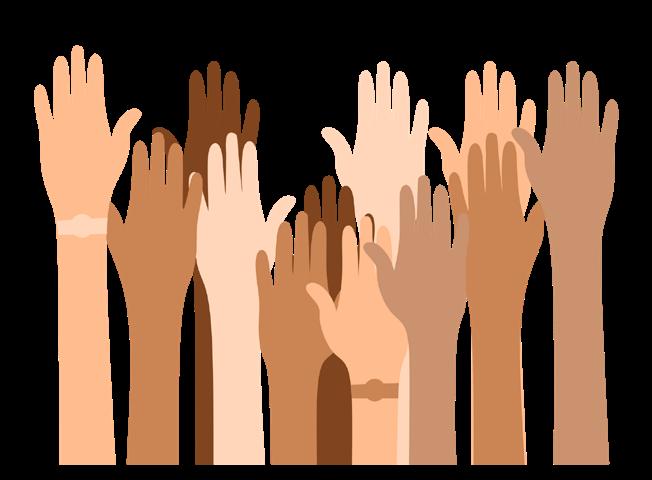



about it. There have been many elections that have come down to a candidate winning by an extremely small percent – like the Al Gore and George W. Bush election – which shows just how much your vote can matter. Only one person can write a new sentence, but together, we can write a new chapter for our country.
Along with voting, peaceful protests have proven to be impactful. Notable examples in history include the Civil Rights Movement and the Women’s Suffrage Parade. There have been increasing issues of differing perspectives regarding civil and human rights the past few years, but this isn’t the first time people have been vocal about injustice. In the past, when we ran into issues like this, peaceful protests had a huge impact on the outcomes.
so big it’s overwhelming, start small. Repost something on social media or take the time to educate someone else or even reach out to your local representative, as these are good ways to start the process of making a change.
It’s time to make the United States of America the “land of the people”
With the 2024 election approaching, Gen-Z can have the biggest say in which political leaders are elected, and we need to make a change. Voting is one of the best ways to make an impact and get your voice out there. The right to vote is a privilege not everyone has and, even though many have the choice, not everyone utilizes it.
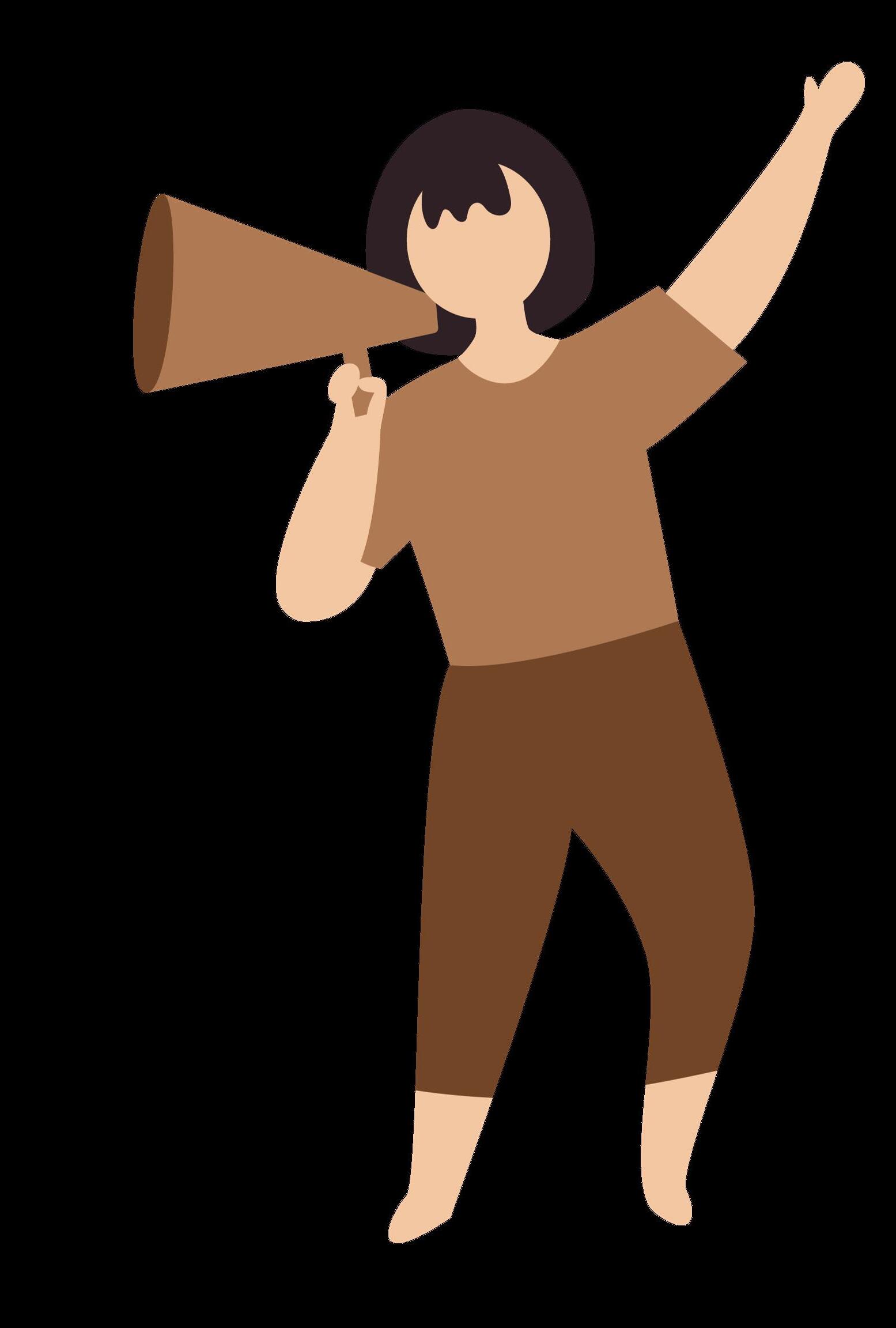
Our society has gotten used to complaining about policies that they do not agree with, yet no one does anything
For example, the Montgomery Bus Boycott started with activist Rosa Parks refusing to give up her seat, which led to a 13-month mass boycott of public transportation that created an enormous financial loss. Due to this protest, the U.S. Supreme Court ruled the policy of segregation as unconstitutional. Mass boycotts have proven to be extremely effective, but research shows that it requires 3.5% of the population to take part in a nonviolent movement for it to be effective. With Gen-Z making up 20.67% of the US population, it’d only take about a fifth of the generation to make a difference.
But if a wide-scale boycott seems
DESIGNED BY MADELINE RIVERA
11
STAFF EDITORIAL
“ Only one person can write a new sentence, but together, we can write a new chapter for our country.
Story by Juliana Mun
Six months ago, I was in a mental coma waiting for school to end. I was alive, but not conscious. Here, but not really present.
That’s when something out of the ordinary happened. A month before school let out, my parents broke the news that we would visit my hospitalized uncle in Seoul, South Korea — which meant missing my last few weeks of junior year. I’ve been to Korea four times before and the last time we went was nearly seven years ago. So even though this wasn’t good news, as the days started dwindling to the flight day, I still looked forward to a break from monotony.
“Korea is unique because of its history,” my parents always told me. “After the World War II era of Japanese imperialism, the country’s economy and livelihood was burnt to the ground. Yet somehow, over a short time, Korea became one of the most advanced, thriving countries in this world.”

Would this be true for my spirit as well? Was this a trip for revival?
Truly in the “American mindset,” I started soul searching. The first few weeks that my family was waiting to see my uncle were spent exploring. Everything was marvelous. My grandparents who I hadn’t seen in years were constantly with us. There was no school, no responsibilities, and it seemed everything I wasn’t able to do in the last year I could now chase to my heart’s content.
I was able to hold my grandmother’s hand and feel her age in my palms. I was able to hear the calling from street food stands and see high school students’ pressed uniform collars. We ate live seafood, felt the waves crash at our feet and rode the air rail over
the Busan ocean. The cities — Seoul, Gangnam district, Songdo district, Suwon, Busan — were connected like the arteries of a heart, and inside the thrum of it I thought: this was what living is supposed to feel like.
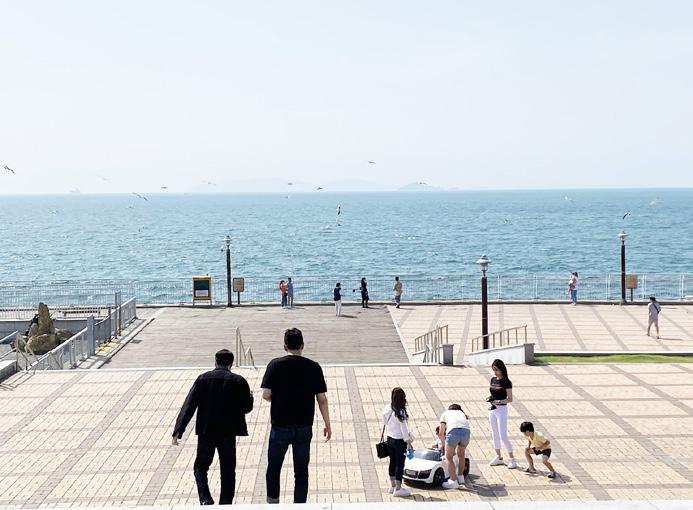
But there was also the quiet. There were times when I was inside my grandparent’s small apartment in Seoul, or when I sat and watched the lives of other people pass by me. Teenagers were out at cram school (intense tutoring program) until late at night, the elderly carried cardboard boxes they could sell for a cent on their backs and the cigarette butts littered the deep alleyway. The city lights were all too bright at times.
Korean people were strong and resilient, advanced and intelligent, yet the youth still struggled and the working economy was like a mountain many couldn’t climb. I wondered how the struggles of life could still span all countries and all cultures, how within the beauty there could be the broken.
In immersing myself where my ancestors lived and learning all these new things, I found out how much I didn’t know. For example, the Korean language is translated backwards from English; all the words at the end of the sentence are at the beginning. Just like that, my life felt like it was being translated here. Backwards to forward. Mundane to exciting.
I kept wondering why I was falling deeper in love with a country I thought I already knew and connecting with a culture I already adored. How do you fall in love with something you were already in love with?
The answer came when my cousins took us to a beautiful observatory in Seoul that overlooked the blue waters. We had already briefly met, but they were still excited to see us the second time. In fact, both of them took off work and made extra time to meet for my dad’s birthday. We sang happy birthday, clapped, then went to the beach front, and all of us were laughing and connecting. It was a moment of peace where everybody could feel sincerity and love.
When saying goodbye, my oldest cousin gave me a gift — lipstick. Back in the car, I stared at the golden cover and the brand name on the cap, and I thought about how different my cousin’s lives were from mine. Their dad, my hospitalized uncle, got into a debilitating car accident when they were young.
Since then, they’ve had to take care
of themselves and their education could only go so far. It became clear to me that they hadn’t been living — they’ve been surviving.
Then, I thought about my sickly grandmother. That morning, she woke up every morning to make special food for us through her pain. My uncle, forever changed by his accident, was unable to live life properly anymore. When we visited him, he still smiled and loved my dad, who he always asked to see when we were out of the country.
I could only feel shame. Soul searching. What was I searching for? Turns out, I had it all there. A loving family, a good support system, an opportunity to enjoy the perks of another country and the chance that, tomorrow, I can be a better person than today.
The thing I was looking for wasn’t in Korea’s innovative architecture, huge supermarkets or even its delicious food, but in the eyes of the people who love me. I vowed, as I tucked my cousin’s gift away, that I would come back and give back to my family. I wanted to give my Korea didn’t help me find myself; it helped me find the definition of culture and it revived my ambition. Whether I become a doctor, a diplomat or even a lawyer, I know I want to save people and touch them as deeply as I was touched. I needed to shift my perspective.
From conscious to alive. From here to completely and passionately present.
From me to people I love and want to fight for.
DESIGNED BY MIE BAKUYA
 My sister (on right) and I (on left) pose for pictures with traditional hanboks on. We visited the folk village in Suwon, South Korea, and were able to immerse ourselves into Korean culture, which gave me a sense of belonging I’ve never felt before.
My sister (on right) and I (on left) pose for pictures with traditional hanboks on. We visited the folk village in Suwon, South Korea, and were able to immerse ourselves into Korean culture, which gave me a sense of belonging I’ve never felt before.
12 OPINION
I took this picture of my family in the lower right corner at an observatory that peered over the waters. We were at the edge of the Korean peninsula, and the world seemed to fit in my palms with my family near me, laughing and having fun.
22 Years Later
Story by Eyesha Sadiq
September 11, 2001.
It was the day that two planes crashed into the twin towers of the World Trade Center. It was the day that thousands of innocent lives were lost. It was the day that altered many lives, including mine, and I hadn’t even stepped foot into the world yet.
9/11 is one of the most tragic events that has taken place in United States history — a day many looked death in the eyes. People’s lives were drastically changed, whether that was having to say goodbye to a loved one or needing to look for a new job.
Since 9/11 was primarily documented on the news, the images of death and fear that were broadcast — people running for their lives, not knowing if they would be able to live another day — created trauma for those who watched. Almost 3,000 lives were lost in New York City, and the sense of community in the country became broken, quickly turning into anger over who was to blame: Muslims.
People’s safety, security and freedom were shattered as they didn’t know when to expect another attack. They became more aware of their surroundings when they went into public areas — especially airplanes. Airports implemented stronger safety precautions to ensure something like this would never occur again. Family members of mine have been pulled aside when flying for “extra security screenings” because they wear hijabs and are seen as a threat. My cousin, who is a hijabi, was forced to take a bomb residue test when she was only 14 years old.
The heavy hearts that Americans carried with them, full of grief and rage, started to change people’s views on Islam as a whole. Through social media and news outlets, people started to associate the term “terrorist” with Islam. Osama Bin Laden, the leader of the attack and of
DESIGNED BY LILY ANDERSSON
al-Qaeda, used his religion as an excuse to murder many and because of this, hate crimes against Muslims started to rise.
Muslims, including my family, are blamed for the wrongdoing of Bin Laden’s actions. There were 152 hate crimes against Muslims in 2021 alone, and they have been on the rise since 2001. Muslims are seen as threats and treated as such.
From a very young age, I was exposed to this Islamophobia. When I lived in Arkansas, people used to graffiti mosques and make terrorist jokes about me, saying that I had bombs in my backpack, after finding out I was Muslim. There were times when kids my age weren’t allowed to be my friends because their parents would tell them I was not safe to be around or wasn’t a good person because of my religion. No 8-year-old should be told that they can’t have certain friends over something they can’t control.
Even though it has been over two decades since the attack on 9/11, the effects are still prominent. In 2017, “Muslim Travel Ban,” the ban on Muslim countries that were seen as “countries of concerns,” was created to ensure the protection of the nation from terrorist entry.
Although this was 16 years after 9/11, it shows the persistence of the government in making sure there was a
9/11 still has lasting affects on Muslims OPINION
limit on the number of Muslims allowed to come into the country. There is still a fear instilled in people about Islam. Islam is not a religion about hate and violence — it’s about peace and love.
My friends and family are not people that commit violent actions. Muhammad Ali, the famous boxer who converted to Islam, was known as a peaceful person and was a civil activist. The Quran talks about finding peace spiritually and how problems should be solved peacefully. When we do Friday prayers in the mosque, the Imam talks about having patience and making sure that your actions don’t hurt someone but instead help them.
My mom is one of my biggest inspirations; she is someone who helps refugees find homes and jobs and helps students in schools get supplies and lunches. She is someone who volunteers her time to make sandwiches for the homeless, regardless of their religion. These are the people who are getting the awful comments, the rude jokes – the Islamophobia. My religion doesn’t deserve to be treated the way it does.
What happened on 9/11 was a horrible tragedy and should be talked about. The people who conducted the strike were in the wrong and should face the consequences of their actions. However, I don’t agree with the way that Muslims are treated in society based on a small number of people’s actions.
One man’s actions should not define an entire religion.
13
“There is still a fear instilled in people about Islam. Islam is not a religion about hate and violence — it’s about peace and love.”
Fall drinks to enjoy instead of a
pumpkin spice latte
 Story by Peyton Kuschmeider
Story by Peyton Kuschmeider
Tous Les Jours
Tous Les Jours is a Korean bakery on Highway 121 and Hebron Parkway. They sell a variety of Korean desserts, pastries and breads. They also have a broad selection of coffees, teas and smoothies.
Hot Tiramisu Latte: The Tiramisu Latte is the first drink I ever tried from Tous Les Jours. It’s a vanilla latte topped with a cream cheese foam and sprinkled with cocoa powder. The coffee itself is sweet and smooth, and the cream cheese topping compliments the sweetness and adds creamy texture. The cocoa powder adds a hint of bitterness that balances out the sweet flavor. Even though the drink is good iced, the hot version helps the flavors to mix better, and is perfect to warm you up in the chilly fall weather.
Iced Pumpkin Pie Macchiato: This is Tous Les Jours’ version of the well-loved Pumpkin Spice Latte. It is a pumpkin flavored macchiato topped with pumpkin spice powder. The coffee is incredibly sweet, refreshing and
The Nutrition Vibe
The Nutrition Vibe is a fitness drink shop located by Hebron Parkway and Huffines Boulevard, known for their positive and community-oriented company. They sell energy drinks with boosters customizable to your personal health goals and many flavors of healthy protein shakes.
Apple Pie Shake: The Apple Pie Shake is an apple flavored protein shake. They line the cup with caramel drizzle and cinnamon powder, and top it with whipped cream and graham cracker crumbs. Despite how the toppings make it sound, the shake is still a healthy option since it is low calorie, low carb and high protein. The drink is sweet and has a refreshing apple flavor to it, but the toppings truly bring out the pie flavors, making it an all around delicious drink.
Autumn Punch energy drink: This drink is a mix of fruit punch, pineapple and coconut; the boldest of flavors being fruit punch, with an aftertaste filled with hints of pineapple and coconut. The Nutrition Vibe offers different boosters to add to the energy drinks, my personal favorite being the “liftoff,” which adds extra energy and boosts mental focus. It pairs perfectly with the autumn punch because it not only tastes amazing, but makes you feel amazing.
Fat Straws
Fat Straws is a boba tea shop on Midway Road and Park Boulevard. They have a wide variety of drinks including milk teas, fruit teas, smoothies, slushes, coffees and milkshakes. They also sell multiple flavors of mochi donuts.
Brown Sugar Pumpkin Milk Tea: An autumn twist on Fat
Straws’ original brown sugar milk tea is the Brown Sugar
Pumpkin Milk tea. The pumpkin flavor is most prominent, but the hints of brown sugar add a sweet spice to the drink. It tastes almost exactly like Starbucks’ pumpkin cream chai tea latte and is incredibly sweet and

Pumpkin Oreo Shake: This is a simple oreo milkshake drizzled with pumpkin sauce. It’s an interesting mix of flavors that I never expected to go together, but they compliment each other well. As a huge fan of both oreo milkshakes and pumpkin spice lattes, both of these flavors combined was amazing. This drink will not disappoint fans of either
DESIGNED BY HEATHER WHEELER
14 ENTERTAINMENT
ERAS (SAAHIR’S VERSION): RED
Welcome to Eras (Saahir’s Version), the series where I go through all of Taylor Swift’s re-released albums chronologically, analyze the era and rank the songs. This installment will cover “Red (Taylor’s Version).”
Album Synopsis
Originally released on Oct. 22, 2012, “Red” was originally written in some of Swift’s formative years, from the ages of 20 to 22. At the time, Swift was rumored to date Jake Gyllenhaal and Conor Kennedy. Swift described this album as a statement solidifying her “thirst for songwriting.”
“Red” is a portrayal of Swift’s journey to being fully grownup — one foot in the door of being a child, and the other in the real world.
Vault Track Review
“Ronan,” the first vault track on the updated album, is a heart wrenching story that occurred in real life. Written in collaboration with Maya Thompson, Swift describes the relationship between Thompson and her late son, Ronan, who passed away from neuroblastoma – a cancer found only in one of 700 children. This song is heartbreaking, forcing me to skip the song every time it comes on so I don’t cry.
The first collaboration in the “Red” vault, “Nothing New,” features Phoebe Bridgers of the band boygenius. This song describes how it feels to grow up as a woman in society. Bridgers asks in her verse, “are we only biding time, ‘til I lose your attention?” This line is one of the most impactful, summarizing the entire song with only ten words. Swift sings in fear, “I know someday I’m gonna meet her, it’s a fever dream,” which describes how Swift will meet the person to replace her in the limelight.
A song originally released by the band Sugarland, “Babe” was written by Swift during the Red era. This song starts by asking “what about your promises?” Swift sings that they “ain’t getting through this one” and will end their relationship. I love this song, and prefer to listen to it in the car with the windows down, screaming at the top of my lungs.
I’ve found a “Message In a Bottle” with the next song. “Message in a Bottle” is a song describing Swift being afraid to admit that she has feelings for someone. She says “a message in a bottle is all [she] can do, hoping it gets to [her crush].” Teenagers view this song as extremely relatable, as it describes how innocent teenage crushes are. I love this song, and usually listen to it right after “Babe.”
“Forever Winter” is a story about trying to pull someone out of a darker space in their life. This is characterized by the
DESIGNED BY SHIREN NOORANI
Story by Saahir Mawani
lyrics “I’ll be [the] summer sun for you forever. Forever winter if you go,” which is a message that might be shadowed by the instrumental. Overall, this song is not my favorite, and I feel like the instrumentals were a little too loud.
“The Very First Night” is the penultimate track on the album, and recalls how Swift wishes she could go back to “the very first night” she spent with her partner. Yet another country-pop banger, I loved hearing this song for the first time on November 12 at 1:00 a.m. My favorite line is “not trying to fall in love, but we did like children running.” This song is in my top five vault tracks.
Anticipated since the original release of “Red” in 2012, “All Too Well (10 Minute Version)” is Swift’s longest song to date. An extension of the fifth track on the original album, this song includes all ten minutes of the song Swift wrote, while writing the album on the “Speak Now World Tour.” Swift released this after almost ten years of fans asking. This song is, by far, my favorite song on the album (proven by it being my most streamed song on spotify), and no matter when it comes on, the intro instantly transports me back to fall. My favorite lyric is, “I reached for you, but all I felt was shame, as you held my lifeless frame.” Rumored to be about Gyllenhall, this to be one of Swift’s best songs throughout her discography.
“Red (Taylor’s Version)” is the ideal album to transition between country and pop, proven by the duality of some of this album’s tracks (“I Bet YouThink About Me”) that uphold both the country and pop soundscape. She also continues her trend across albums of having deep ballads that replicate listeners’ feelings (“Nothing New” and “All
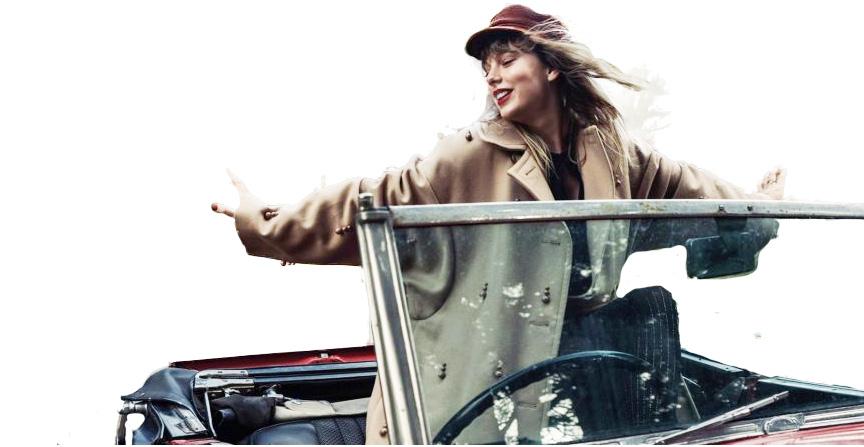
ENTERTAINMENT 15
The Hawks' Nest



























































































1616 ENTERTAINMENT DESIGNED BY EYESHA SADIQ
Connect The Dots
55 56 57 58 59 60 1 2 3 4 5 6 7 8 9 10 11 12 13 14 15 16 17 18 19 20 21 22 23 24 25 26 27 28 29 30 31 32 33 34 35 36 37 38 39 40 41 42 43 44 45 46 47 48 49 50 51 52 53 54 61 62 63 64 65 66 67 68 69 70 71 72 73 74 75 76 77 78 79 95 101 103 104 105 106 107 100 99 97 96 90 89 1 2 3 4 5 6 7 8 9 10 1 2 3 4 5 6 7 8 9 10 11 12 13 14 15 16 17 18 19 80 81 82 83 84 85 86 87 88 92 91 93 1 2 3 4 1 2 34 567 8 9 10 11 12 13 14 15 16 17 18 19 20 21 22 23 24 25 19 20 21 1 2 3 45 6 7 8 9 10 11 12 13 141516 17 18 22 24 98 102 94 If the number is in bold, then start or end there. 11













 Madeline Rivera Editor-in-Chief.
Madeline Rivera Editor-in-Chief.

















 My sister (on right) and I (on left) pose for pictures with traditional hanboks on. We visited the folk village in Suwon, South Korea, and were able to immerse ourselves into Korean culture, which gave me a sense of belonging I’ve never felt before.
My sister (on right) and I (on left) pose for pictures with traditional hanboks on. We visited the folk village in Suwon, South Korea, and were able to immerse ourselves into Korean culture, which gave me a sense of belonging I’ve never felt before.
 Story by Peyton Kuschmeider
Story by Peyton Kuschmeider













